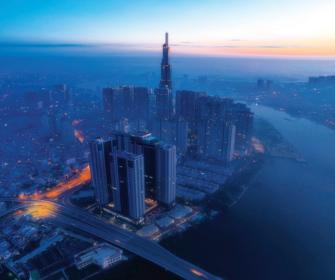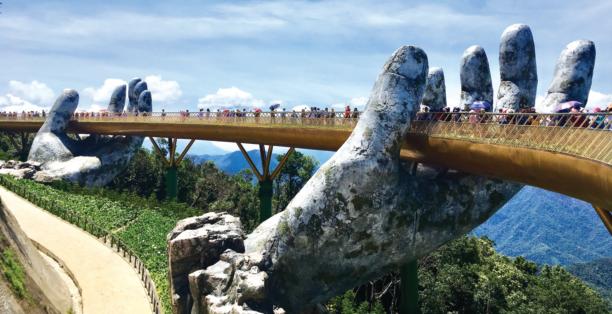
4 minute read
Solitary Splendor


This page, from top: Four Seasons Hoi-An sits just outside the city, and offers guests a serene stay along quiet beaches used for both fishing and recreation; national delicacy pho, pronounced “fuh,” is eaten morning, afternoon and night and sold at almost every restaurant and street cart; in Thu Sy, a trade village in the province of Hung Yen, craftswomen make traditional bamboo fish traps. Opposite page, top: These terraced rice fields in Mu Cang Chai, the northwest region of Vietnam, are man-made and carved into mountains. Opposite page, bottom: There are about 400 rivers in Vietnam, and almost half of its mainland borders the sea. Here, a young Vietnamese woman repairs a fishing net for the morning fishermen.
toes and caves are best explored by boat.
We next traveled through two other World Heritage Sites—Hué and Hoi An. Once the imperial capital of Vietnam, Hué is home to the 19th century Royal Citadel, whose walls protected the royals from both invaders and the rival armies of feudal lords. While much of the citadel was destroyed during the Tet Offensive in 1968, UNESCO has restored the Royal Theater, a library and temples honoring the Nguyen dynasty. Hoi An, a picturesque town along the Thu Bon River, was a historically important trading port, drawing traders from China, Japan and Europe. As a result, it enjoys a rich culture, and the foreign influences can be seen throughout the architecture of this “lantern city.” Not straying far from its trading past, Hoi An is well known for its bespoke clothing. The many tailors in this small town will create a custom garment of the finest fabrics in days. If tailored clothes do not strike your fancy, visit the bustling Central Market for anything from food to kitchen utensils or home décor to Vietnamese specialty items. Just outside the city sits the idyllic Four Seasons Nam Hai. Our room opened up to the most pristine of beaches, with only the occasional walker and a few fishing boats to join our view. A peaceful outdoor shower in the privacy of our suite set the mood for relaxation perfectly.
While the cuisine is delicious, pho (pronounced “fuh”) became an easy favorite. This warm broth with rice noodles, meat and any number of vegetables is served at breakfast, lunch or snack time, on the street or in restaurants, and, I’m convinced, will heal any number of ills. Wandering Hoi An at night and
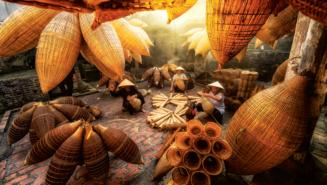

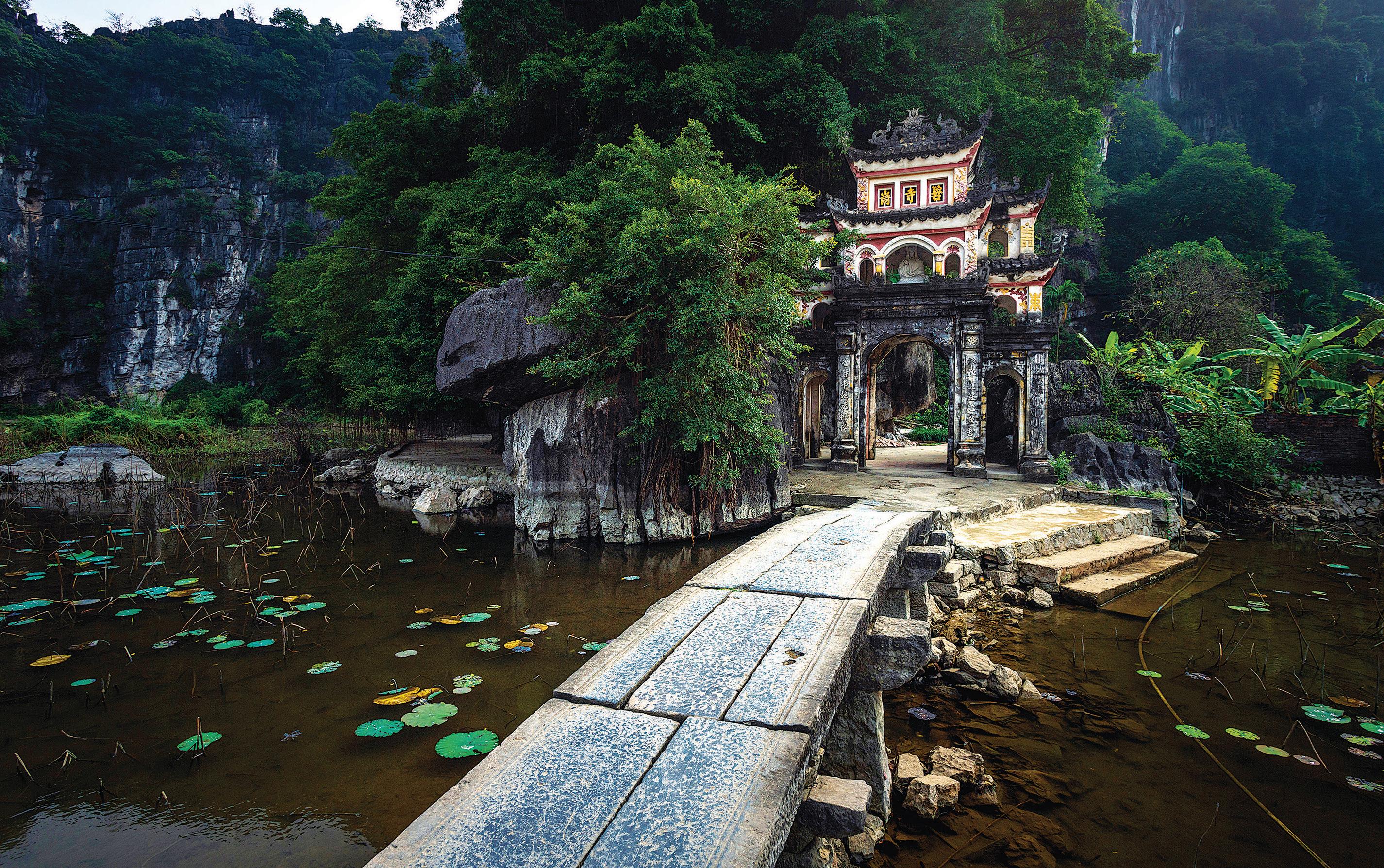
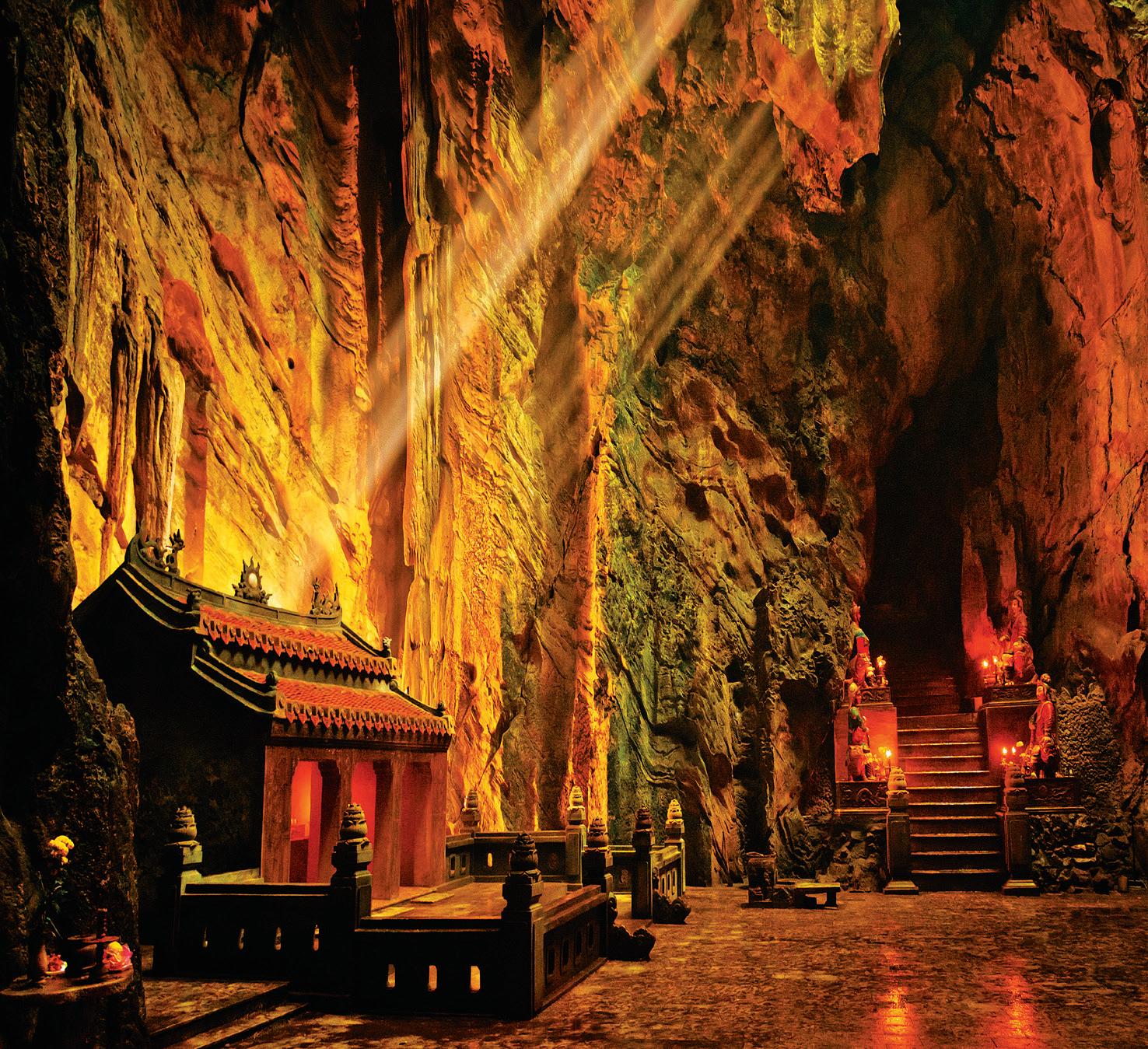
enjoying the beautiful lanterns decorating the homes, walkways and boats along the river, we found Anthony Bourdain’s favorite banh mi (a French- and Asian-influenced sandwich and one of Vietnam’s most popular street foods) at Banh Mi Phuong. A banh mi and a beer were as affordable as they were delectable, and should not be missed. Tip: If the lines are long, head upstairs for a seat by the window for faster service and views of the street below.
As in other Asian countries, there is no dearth of temples and tombs to explore. In the Hué vicinity alone there are at least six tombs dedicated to the Nguyen emperors. The beautiful Huyen Khong Buddhist Grotto carved into the Marble Mountains and the large pagodas at Bái Đính Temple are impressive. But it was the many small family temples in the rural areas that captured my heart—a final home to generations of a family painstakingly cared for by the younger generation.
My eight days in Vietnam were not nearly enough. There is so much more to see in and around Ho Chi Minh City (formerly Saigon) and the Mekong Delta, as well as the exotic beach resorts in the Con Dao islands and along the Nha Trang coast. What I did see was a revived country ready to open its doors to the world and welcome all visitors. I found the people to be warm and genuinely excited to welcome Americans. One can’t ignore that it is still a socialist republic, but it’s a republic dipping its toe into the global economy and tourism. Now is the time to experience Vietnam, while there is still much untouched and before the masses arrive.
This page, clockwise from top: Coiled incense burners are a warm welcome into Ba Thien Hau temple, built in 1760 to honor Mazu, the “Lady of the Sea;” commerce and culture collide in Ho Chi Minh, the largest city in Vietnam; today, on the 14th day of each lunar month, the town trades its electric lights for traditional colored lanterns, seen here; a major tourist attraction, the Golden Bridge is supported by two giant hands made of fiberglass and wire mesh over Ba Na Hills mountain resort in Da Nang. Opposite page, top: Ninh Bình is a hidden gem of Vietnam, giving visitors a peek into the villagers’ rural way of life. The area features many Buddhist pagodas, including Bai Dinh Pagoda, Southeast Asia’s largest Buddhist complex. The breathtaking Marble Mountains is a cluster of five marble and limestone hills located in Ngu Hành So’n District, south of Da Nang city.

